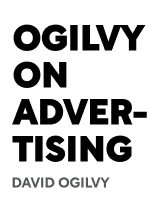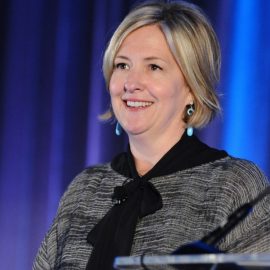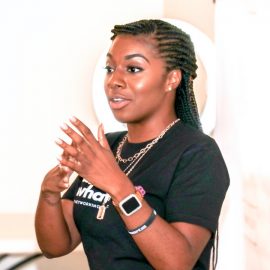

This article is an excerpt from the Shortform book guide to "Ogilvy On Advertising" by David Ogilvy. Shortform has the world's best summaries and analyses of books you should be reading.
Like this article? Sign up for a free trial here .
Who are the advertising greats? What were their contributions to modern advertising?
There are 6 advertising greats who are considered the top advertising execs of all time. Their contributions range from outlining procedures for agency work to landing top accounts to creative.
Read more about the 6 advertising greats and what they did.
Six Advertising Greats
Many people have contributed to the ad industry, but these six people aree considered some of the most influential.
Albert Lasker (1880-1952)
Albert Lasker entered the workforce as a reporter for Galveston Morning News. When he was 18, he got a job with the Lord & Thomas agency, which at the time was the third biggest agency in the U.S. but only had one part-time copywriter. Lasker bought the agency when he was 20.
Lasker felt that all an agency had to do was write copy good enough to sell a product. He thought research was a waste of time and resisted using images in ads. This saved him a lot of money in researcher and art director salaries, and his agency made a 7% profit (1% was impressive at the time of writing). He amassed a greater fortune than anyone in the business.
While Lasker was successful, he wasn’t always easy to work with. He was a dictator and wasn’t interested in anyone else’s opinion. He could also be ruthless—during the Depression, he cut everyone’s salary by a quarter and fired 50 people at once, even though his own salary was $3 million a year. He hated committees and talking on the phone, he never joined an advertising club, he avoided competitors, and he dropped huge accounts, such as General Electric, when they annoyed him.
However, he had some positive qualities too. While there was a lot of turnover, he put a lot of effort into training people and paid well. His staff appreciated his detail-orientation tempered by his ability to see the big picture, his magnetism, his ability to anticipate consumers, and how hard he worked.
He worked at Lord & Thomas for 44 years until, in 1942, he decided to retire. He gave the company to three of his employees for $100,000 and told them to change the name.
Stanley Resor (1879-1962)
Another of the advertising greats is Stanley Resor. Like Lasker, Stanley Resor held other jobs before getting into the advertising industry. While he attended Yale, he worked as a tutor and bookseller. Later in life, he started working for J. Walter Thompson.
Unlike Lasker, Resor didn’t think much of copywriters. He focused on his account executives and valued research. Every month, he asked the same 5,000 consumers what they bought, he built a test kitchen in the agency, and he experimented with TV before it was even viable for advertising.
Also unlike Lasker, Resor treated his staff very well. He was very interested in other people’s opinions—he believed in consensus and hated hierarchies—and his company had no formal structure or job descriptions. He was good at attracting and keeping top talent.
Resor was responsible for some firsts in the industry—he was the first person to set up international offices and the first to employ a woman copywriter when he hired his wife, Helen.
Resor worked long hours and adhered to his principles. He refused to advertise liquor or patent medicine accounts, and he turned down the opportunity to work with Camel.
Resor led J. Walter Thompson for 45 years, until he was 80. Staying so long was a mistake—by this point, his ideas were outdated and many of the people who could have succeeded him had already retired themselves. However, when he retired, the agency was the largest in the world.
Raymond Rubicam (1892-1978)
Like all the advertising greats, Raymond Rubicam didn’t get into advertising right away. He left school at 15 and did a variety of odd jobs for almost 10 years. When he was 24, he got a job as a copywriter for a Philadelphia agency that he stayed with for three uncomfortable years (the office politics were unpleasant). Next, he spent four years writing for N.W. Ayer, which was the largest agency in the U.S. at the time.
By this point, Rubicam was ready to go his own way and he started Young & Rubicam with John Orr Young, who had been an account executive at Ayer. They had only $5,000 worth of capital. Their first big account was General Foods.
Rubicam most valued copywriters and creative people and didn’t think much of account executives. He came to value art directors too—Rubicam and Young’s earliest advertisements featured good copy but amateur layouts, and when Rubicam realized this shortcoming, he hired a top art director. From then on Rubicam cultivated a reputation for good taste.
Like Resor, Rubicam was responsible for some firsts in the industry—he was the first to use research, which he started by hiring Gallup to measure advertisement readership.
Also like Resor, Rubicam had principles. He believed that advertising shouldn’t be sleazy, shouldn’t lie or attempt to bamboozle the public, and should not only sell a product but be a work of art. He dropped accounts when they were bullies.
Rubicam retired from his agency after 21 years when he married for the second time. At the time of writing, his agency billed around $3 billion a year.
Leo Burnett (1891-1971)
Leo Burnett’s first jobs were writing show cards for a department store and reporting for the Peoria Journal. Then, he worked for Cadillac’s advertising department, and for 10 years for an Indianapolis agency. Burnett started his own agency in 1935 in Chicago but it didn’t take off until he was 60 years old.
Burnett was most interested in print but didn’t believe in long copy. He was responsible for the “Chicago school” of advertising, which he believed was more down-to-earth, connected to the land, vernacular, and resonant with the public. He believed the following about the creative process:
- All products have drama—find it and use it.
- Aim high. Even if you don’t hit your goal, you’ll still get more done than if your goal had been smaller.
- Work hard, trust your instincts, and research.
Unlike some of the other greats, Burnett had no problem advertising cigarettes and his most successful campaign was for Marlboro. When the company first signed up, it was obscure, and after he was done, it was the best-selling cigarette worldwide.
He believed that agencies had a responsibility to put their clients first. Once, he saw someone on his staff using a competitor’s product and sent out a memo about it.
Claude C. Hopkins (1867-1932)
Claude C. Hopkins worked as a lay preacher and bookkeeper before getting into advertising and sales with Bissell Carpet Sweeper Company. He worked in advertising for two other companies before getting a job as a copywriter for Lord & Thomas, where he stayed for 18 years.
Hopkins was the first to use test marketing, coupon sampling, copy research, and force distribution. He also believed in the power of brand images before they were even invented.
Additionally, he believed in the hard sell and wrote about it in his book Scientific Advertising.
Rubicam hated Hopkins because he thought Hopkins deceived the public.
Hopkins eventually started his own agency but died five years later.
Bill Bernbach (1911-1982)
The last of the advertising greats, Bill Bernbach, earned a degree in English Literature from New York University. After graduating, he worked for Schenley (a now-defunct liquor company) in the mailroom and as a speechwriter. Later, he joined the Weintraub agency, the army, and the Grey agency. A few years later, he started Doyle Dane Bernbach with two colleagues and $1,200.
Bernbach was good at combining copy and images. He believed that good ideas and good execution were critical for good advertising. He was also a good salesman. He was very stubborn, but also carried a card around that said, “Maybe he’s right,” which reminded him to consider that clients’ opinions might occasionally be more valid than his.
He was good at getting the best work out of people, but he hated research because he thought it stifled creativity.
Unlike all the other advertising greats, he didn’t let his work take over his life. He never worked past 5 p.m. or on weekends.
At the time of writing, Doyle Dane Bernbach agency billed more than $1 billion.

———End of Preview———
Like what you just read? Read the rest of the world's best book summary and analysis of David Ogilvy's "Ogilvy On Advertising" at Shortform .
Here's what you'll find in our full Ogilvy On Advertising summary :
- What the "father of advertising" has learned from his decades' of experience
- How to craft easy-to-understand ads that work
- The 6 pioneers of the advertising industry






